Here we feature family members whom we have categorised as having gone over
and above the norm, or above and beyond what might be expected of them,
achieving much in their place of work, perhaps being exalted for their
successes, or efforts that have gained them recognition that most of us
could not aspire to. Research scientists, hospital consultants, senior Civil
Servants and Law Officers, high-ranking military officers and war heroes,
university professors: their civic, academic, military, scientific or
community lives have inspired or won the praise of others.
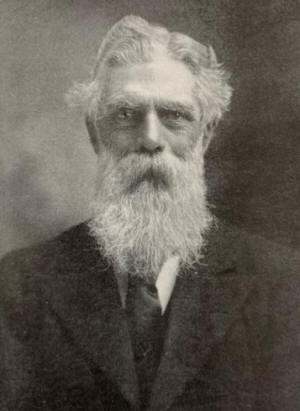 Born
the son of mariner, Richard Heard, in Northam, N. Devon, in 1847, William Esau
HEARD moved with
his family to Newport, Wales, where he was engaged as apprentice and office
boy, by ship broker, G.W.Jones & Co, at 4/- per week. Over the
years, he passed through
all the grades in the office, and executed many important missions on the
Continent before rising to be principal partner in 1880, then Managing Director
with Jones, when the firm was renamed Jones, Heard and Co. The firm
became very closely associated with the import and export trades of
Newport, as agents to the many Conference Lines of Steamers trading to and
from Newport with various parts of the world. He was a founder of Newport
Chamber of Commerce and was six times president. and was its first
representative on the Newport Harbour Commission. He played a leading role in
the establishment of Newport's Eastern Dry Dock, an important step in the
town's industrial history. William, in top hat and frock coat with buttonhole,
went to his office every day, becoming known as The Grand Old Man of
Newport. His business trip to Canada and the USA in 1865 was instrumental in
extending company affairs, and his detailed account of this trip, dictated
many years later from memory, is now in the Public Archives of Nova Scotia in
Halifax and the National Archives of Canada in Ottawa and makes good reading.
Born
the son of mariner, Richard Heard, in Northam, N. Devon, in 1847, William Esau
HEARD moved with
his family to Newport, Wales, where he was engaged as apprentice and office
boy, by ship broker, G.W.Jones & Co, at 4/- per week. Over the
years, he passed through
all the grades in the office, and executed many important missions on the
Continent before rising to be principal partner in 1880, then Managing Director
with Jones, when the firm was renamed Jones, Heard and Co. The firm
became very closely associated with the import and export trades of
Newport, as agents to the many Conference Lines of Steamers trading to and
from Newport with various parts of the world. He was a founder of Newport
Chamber of Commerce and was six times president. and was its first
representative on the Newport Harbour Commission. He played a leading role in
the establishment of Newport's Eastern Dry Dock, an important step in the
town's industrial history. William, in top hat and frock coat with buttonhole,
went to his office every day, becoming known as The Grand Old Man of
Newport. His business trip to Canada and the USA in 1865 was instrumental in
extending company affairs, and his detailed account of this trip, dictated
many years later from memory, is now in the Public Archives of Nova Scotia in
Halifax and the National Archives of Canada in Ottawa and makes good reading.
He became a representative of many nations in a consular capacity. He
was the Consular Agent for the USA for 28 years. He represented 13 nations as
Consul or Vice-Consul, including Russia, Belgium, Greece, Holland, Turkey,
Uruguay, Honduras and Peru. He established a precedent for his sons and
other company members to take on consular roles. His Majesty the King of the
Belgians conferred upon him the Civic Cross First Class. This was
immediately followed by the Croix Chevalier de l'Ordre de Leopold, which is
the greatest distinction within the power of the Belgian Government to confer.
These were in recognition of his valuable services, rendered over a period of
more than 35 years as vice-consul and for special war work.
He was appointed Justice of the Peace for the County of Monmouthshire by the
Lord Chancellor on the recommendation of the Lord-Lieutenant of the County.
He inaugurated the Newport Devon and Cornwall Society and was its first
President. He was presented to The Prince of Wales, and the Duke of York, on
their visits to Newport . He was a Fellow of the Institute of Chartered Ship
Brokers.
He married Julia Griffiths in 1858. They had 10 children, all of whom
survived to maturity. On the occasion of his 100th birthday in 1935 he was
attended by a deputation headed by the Mayor of Newport. They made a unique
presentation of an album containing the signatures of 750 worthies
representing every phase of life in Newport and Monmouthshire. The album
contained too an illuminated address which paid tribute to his long lifetime
of public service. "To William Esau HEARD J.P.
On the occasion of the one hundredth anniversary of your birthday, we, whose
signatures are collected in this album, representing the civic, professional
and business activities of the town and port of Newport, present to you this
token of our friendship and esteem, and of our best wishes for your
continued long life and health."
"Since you entered the firm with which you are still associated, 85 years
ago, Newport has seen many great developments which have raised it to the
position of one of the leading ports in the country ..."
"The lord-lieutenant of the county of Monmouth, the high-sheriff of the
County of Monmouth, the Mayor and corporation of Newport, local and county
magistrates, his Majesty's Collector of Customs and Excise, members of the
Consular Corps, of which you were for over 35 years an honoured member;
corporation officials and police, shipowners and shipbrokers, your business
associates over very many years; the Newport Docks manager and his staff,
and workers at the Newport Docks, members of the Newport Chamber of
Commerce, of which you were one of the founders: lawyers, doctors, and
businessmen, your fellow workers for the Royal Gwent Hospital, your fellow
members of the Devon and Cornwall Society, members of the Monmouthshire
County Club and of the Newport Athletic Club, the Newport Pilotage Board and
the pilots of the port of Newport, and others in all walks of life join in
this testimonial to the long and useful life you have led, with the
development and prosperity of Newport always to the fore in your many and
varied activities."
All the well-wishers and their representatives signed, along with the Bishop
of Monmouth and the Mayors of Monmouth and Abergavenny, and finally members
of William's family who had assembled for the occasion added their
signatures. He retained the honorary position of Chairman of Jones,
Heard and Co until his death on 27 Jan 1938. A memorial service was held in
his honour in St. Woolos Cathedral, Newport, on 31 January 1938.
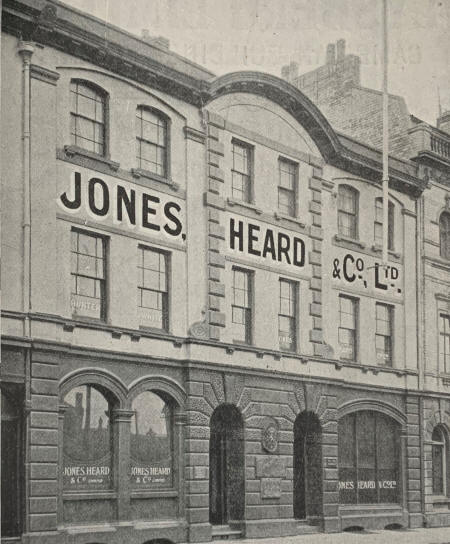
Premises of Jones, Heard and Co in Newport
| The following family members were awarded the most excellent Order of the British Empire at the ranks shown in the years listed. | ||
| Commander - CBE | ||
| Stephen Lamplugh | Military Division | 1943 |
| Ronald Hatton | Civil Division | 1934 |
| Officer - OBE | ||
| Everitt G.D.Murray | Military Division | 1919 |
| George Blackler | Military Division | 1946 |
| Michael Domaille | Civil Division | 1986 |
| Martin Bell | Civil Division | 1992 |
| Anthea Bell | Civil Division | 2010 |
| William Ferguson | Civil Division | 1965 |
| Alan Pitts Crick | Civil Division | 1956 |
| Ronald King-Smith | Civil Division | 2010 |
| Member - MBE | ||
| Fred Frost | Military Division | 1924 |
| George Maeer | Civil Division | 1966 |
| Solomon C Kaines Smith | Military Division | 1919 |
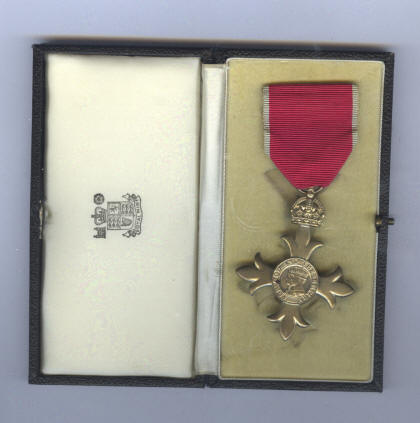
George Maeer's medal for the MBE
Alan Pitts CRICK (1913-1995) was the eldest son of engineer, Owen John Pitts Crick,
and Margaret Daw, a sister of Mary Le Patourel, née Daw.
Owen had migrated to Canada from Devon in 1908 and Margaret joined him after
their marriage in Exeter in 1912. Their two sons were born in Toronto. The
family returned to the UK in 1919. Both boys attended “The Modern” boy’s
school in Minehead, before continuing their education at Latymer Upper School,
Hammersmith, followed by higher education at King’s College London, where
their careers took different paths. Alan read Modern Languages, and
also took a Masters in German. He then went to Heidelberg University where he
obtained a doctorate in Germanic Studies in 1938. He was appointed Acting Vice
Consul, and then Vice Consul at the British Consulate General, in the Free City of Danzig,
1938-1939. His duties involved providing documents for Jews who were
desperate to leave the country. He was saddened by the number who could not
bring themselves to leave everything behind and start a new life. Returning to Britain at the outbreak of war, Alan
joined the Army in 1939, was commissioned in the following year, and appointed
an
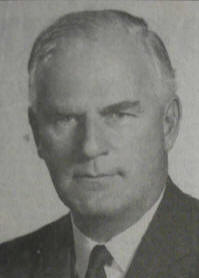 In September 1941 he was posted to General Staff Intelligence,
8th Army and became a Field Intelligence Officer, at the 8th Army HQ
for Egypt and Libya
from 1941-1942. On 1o May 1942 at 8th Army HQ East of Tobruk he was asked to
impersonate a German army officer! He received a mysterious
summons to Middle East headquarters in Cairo. British troops had captured a
German officer who had been on a reconnaissance mission near the southern
end of the Gazala Line. It was thought that he might have been fully briefed on
Rommel’s plans for a fresh offensive in the desert. Rather than subject the
prisoner, a Major
Rudolph, to a hostile interrogation, British intelligence officers wanted
Crick, who was fluent in German, to impersonate a fellow German officer and
ingratiate himself with the hapless Rudolph so that he could glean what
information he could – bearing in mind that the captured German could well
be a “plant”. Crick donned the uniform of a second lieutenant in the
Wehrmacht and adopted the character and background details of a friend he
had known before the war while he had been taking his doctorate at
Heidelberg University. After testing his cover by means of a stern grilling
from experienced British interrogators, he was smuggled into the exercise
yard of the prison where Rudolph was being held. The ruse was so successful
that Rudolph quietly warned his fellow “German” to be wary of
two Italian pilots who were also there, because he suspected them of being
British “stool pigeons”. A thoughtful man who disapproved of Hitler’s
invasion of the Soviet Union, Rudolph quickly convinced Crick that he was
genuine. But he clearly had not been informed of Rommel’s plans. Crick
steered the conversation round to the impending German attack.
Rudolph’s analysis – which proved accurate – was that the Germans would be
able to take Tobruk, Bardia and Halfaya, but that the stretch of desert
between the Egyptian frontier and the Delta would be too much for them. At one point Crick nearly blew his cover by
asking Rudolph if there were many Axis troops at Naples. “You must know
that,” replied Rudolph sharply, “you were there a week ago.” Crick parried
by saying that there had seemed to be quite a few, but he was not sure how
many. Rudolph accepted this reply, and went on to divulge further
intelligence which Crick passed to his superiors. Later that year
Crick was to gather intelligence on the enemy defence lay-outs at El Alamein,
contributing to the speed of Montgomery’s victory. Rudolph lent Crick a
crumpled German newspaper as they parted. “I never saw him again.” Crick
wrote in later life.
In September 1941 he was posted to General Staff Intelligence,
8th Army and became a Field Intelligence Officer, at the 8th Army HQ
for Egypt and Libya
from 1941-1942. On 1o May 1942 at 8th Army HQ East of Tobruk he was asked to
impersonate a German army officer! He received a mysterious
summons to Middle East headquarters in Cairo. British troops had captured a
German officer who had been on a reconnaissance mission near the southern
end of the Gazala Line. It was thought that he might have been fully briefed on
Rommel’s plans for a fresh offensive in the desert. Rather than subject the
prisoner, a Major
Rudolph, to a hostile interrogation, British intelligence officers wanted
Crick, who was fluent in German, to impersonate a fellow German officer and
ingratiate himself with the hapless Rudolph so that he could glean what
information he could – bearing in mind that the captured German could well
be a “plant”. Crick donned the uniform of a second lieutenant in the
Wehrmacht and adopted the character and background details of a friend he
had known before the war while he had been taking his doctorate at
Heidelberg University. After testing his cover by means of a stern grilling
from experienced British interrogators, he was smuggled into the exercise
yard of the prison where Rudolph was being held. The ruse was so successful
that Rudolph quietly warned his fellow “German” to be wary of
two Italian pilots who were also there, because he suspected them of being
British “stool pigeons”. A thoughtful man who disapproved of Hitler’s
invasion of the Soviet Union, Rudolph quickly convinced Crick that he was
genuine. But he clearly had not been informed of Rommel’s plans. Crick
steered the conversation round to the impending German attack.
Rudolph’s analysis – which proved accurate – was that the Germans would be
able to take Tobruk, Bardia and Halfaya, but that the stretch of desert
between the Egyptian frontier and the Delta would be too much for them. At one point Crick nearly blew his cover by
asking Rudolph if there were many Axis troops at Naples. “You must know
that,” replied Rudolph sharply, “you were there a week ago.” Crick parried
by saying that there had seemed to be quite a few, but he was not sure how
many. Rudolph accepted this reply, and went on to divulge further
intelligence which Crick passed to his superiors. Later that year
Crick was to gather intelligence on the enemy defence lay-outs at El Alamein,
contributing to the speed of Montgomery’s victory. Rudolph lent Crick a
crumpled German newspaper as they parted. “I never saw him again.” Crick
wrote in later life.
He remained with Middle East GHQ as a General Staff Officer 3, 1942-1943.
In 1943 he was appointed General Staff Officer 2, Instructor on War
Intelligence Course at the School of Military Intelligence, Matlock, where
he prepared intelligence officers for future operations. In the last stages
of planning for the D-Day invasion of Normandy he joined General
Eisenhower‘s staff at Supreme Headquarters Allied Expeditionary Force, and
acted as link officer between intelligence and the planners throughout the
North-West Europe campaign, serving as a Major, General Staff Officer 2,
Operational Intelligence, G2 Division, Supreme Headquarters Allied
Expeditionary Forces (SHAEF), from 1944-1945. After the German surrender,
Crick was posted to Montgomery’s staff at Tactical HQ 21 Army Group and HQ
British Army on the Rhine, as a General Staff Officer 2. He was appointed as
Deputy Head of the Political Intelligence Section, Headquarters British Army
of the Rhine, 1945, where he helped in the transition from military to
political intelligence. School of Military Intelligence, Matlock, Derbyshire
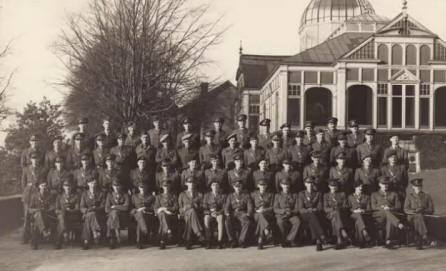
With his background he was a natural choice, on being demobilised at
the rank of Major, for the newly-formed Joint Intelligence Bureau at the
Ministry of Defence. He was a Senior Research Officer there from 1946-48.
Then he was at the Joint Services Staff College in 1948. He became the
Deputy Assistant Director, Joint Intelligence Bureau, from 1950-1953; He
went to Washington, for a spell, from 1953 to 1956, where he was seconded to
the British Joint Services Mission. In 1957 he returned as assistant
director of JIB . He was appointed to OBE in 1956.
After his retirement from the MOD he became Deputy Chief Adviser to Commercial Union Assurance Company Limited, from 1973-1978 retiring for the second time in 1978. Thereafter he spent much of his time indulging his lifelong passion for writing poetry, especially nonsense verse. Several of the latter were published by Penguin in More Comic and Curious Verse while in 1992 Crick brought out his own anthology In the Caves of the Mind, containing his more serious poems in addition to his light verse.
He became chairman of the Conservation Society at Rye, East Sussex, where he lived, but his continuing membership of the Exmoor Society also reflected his underlying affection for the West Country.Alan's publications include; Die Persönlichkeit Johann Christian Günthers (translated by Alan J.Pitts Crick),Heinrich Fahrer, Heidelberg-Handschuhsheim, Germany, 1938 ;
Existence and Being by Martin Heidegger (translated by Alan J.Pitts Crick and R F C Hull, et al. ) Vision, London, 1949;
Ostasien
denkt anders (The Mind of East Asia) by Lily Abegg (translated by A. J. Crick and E. E. Thomas)
Thames, London, 1952:
In the caves of the mind. Poems by Alan Crick (Privately
published, Rye, Sussex, 1992).
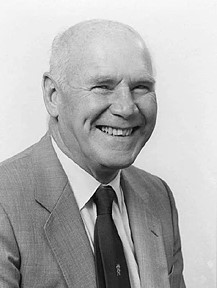 Medical School on an Open
Science Scholarship and qualified MRCS LRCP in 1939. War determined his
career at that point, and he joined the Merchant Marine. He had learned
to fly open cockpit planes in the University Air Squadron. From 1940 to 1946 he
served with the Royal Navy Volunteer Reserve on the aircraft carrier HMS Illustrious
as a Surgeon Lieutenant. The Illustrious was a daunting
experience at first, since he joined immediately after qualifying with very
little actual experience in the practice of medicine, and because he was
very seasick for the first 10 days after leaving port.
Medical School on an Open
Science Scholarship and qualified MRCS LRCP in 1939. War determined his
career at that point, and he joined the Merchant Marine. He had learned
to fly open cockpit planes in the University Air Squadron. From 1940 to 1946 he
served with the Royal Navy Volunteer Reserve on the aircraft carrier HMS Illustrious
as a Surgeon Lieutenant. The Illustrious was a daunting
experience at first, since he joined immediately after qualifying with very
little actual experience in the practice of medicine, and because he was
very seasick for the first 10 days after leaving port.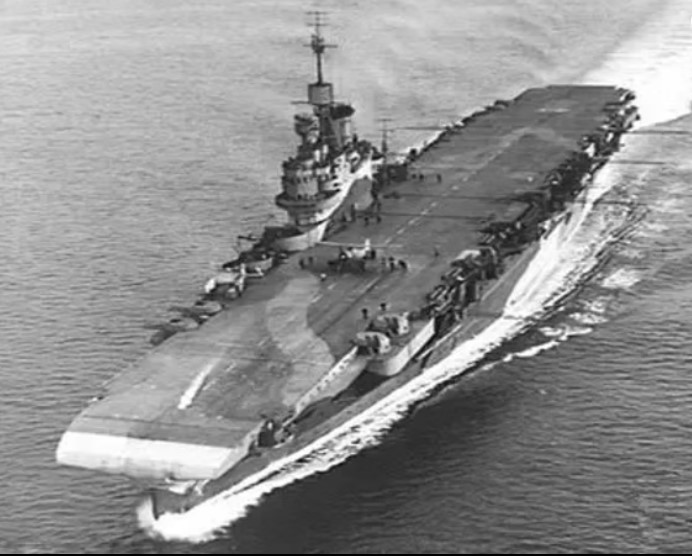
HMS Illustrious
Following his demobilisation, Ronald began his ophthalmic training back at King's College Hospital, becoming a consultant surgeon in 1950 at King's, at the Belgrave Hospital for Children and at the Royal Eye Hospital. He devoted much of his professional life to the study of glaucoma – early in his career glaucoma was generally accepted to lead inevitably towards blindness. Ronald challenged this, grasping the importance of early diagnosis. He realised this would only be possible with an extensive screening programme, quite outside the capability of the ophthalmic service. To rectify this he founded, in 1974, the Glaucoma Association, later to become the International Glaucoma Association (IGA). The IGA now has more than 6,000 members and raises over £1.5 million every year to fund research and screening programmes around the world. Its research is now directed at the genetic causes of glaucoma, and in 1991 Crick negotiated a collaboration between the IGA and Professor Mansoor Sarfarazi, molecular geneticist at Connecticut University, and Anne Child, clinical geneticist at St George's Hospital. This joint approach has made a great contribution to the identification of loci of glaucoma genes, which researchers hope will result in effective treatment for glaucoma.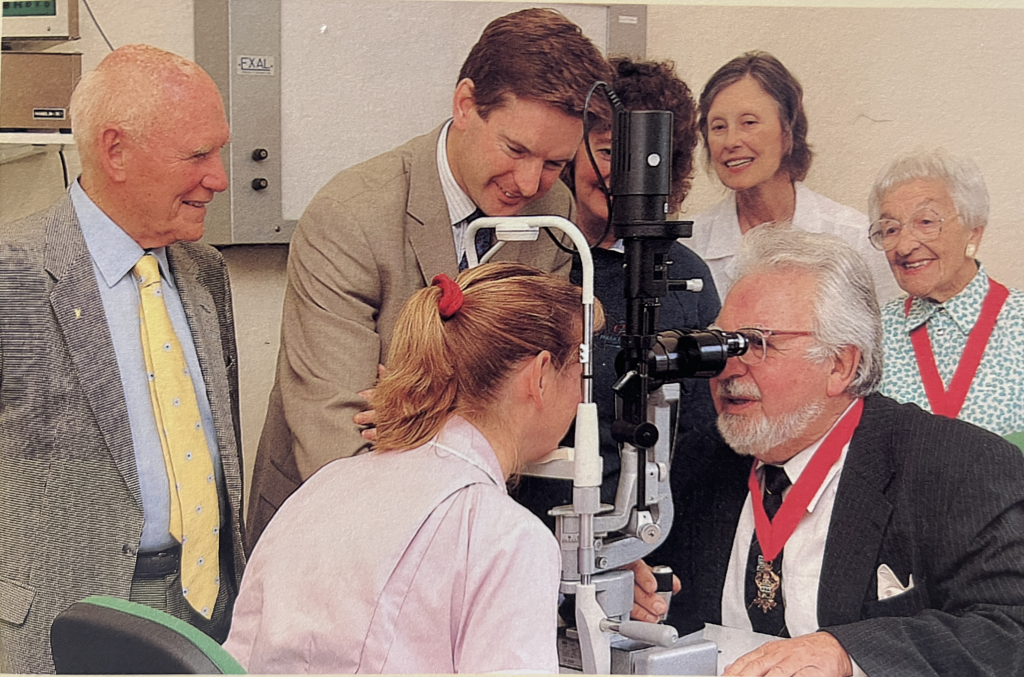
Ronald (left) at the presentation of a Goldmann tonometer and slit lamp microscope
With Roger Trimble he co-wrote A Textbook of Clinical Ophthalmology (London, Hodder and Stoughton, 1986). He delivered many lectures around the world and was awarded the Medal of Achievement by the American Society of Contemporary Ophthalmology. IRonald was a great admirer of Winston Churchill and was delighted
when he was invited to Chartwell in a professional capacity to see Lady
Churchill; on one occasion he watched the film The Big Country with Winston in
his private cinema, and had the great man's pet bird perch on his shoulder,
and peck at his ear.
 Grandson of the well-known
Crediton character, auctioneer Frederick Helmore, son of Robert Cornish and
Margaret Helmore, Professor Frederick Hector J.CORNISH (1930-2020)
achieved his BA at Oxford, and as a junior lecturer in 1953-1954 got his
DPhil, his thesis subject The Mathematical Form and Physical Content of
Unified Field Theories Derived from a Variational Principle. He
maintained an interest in research into relativity theory, and mathematical
physics throughout his academic life. He was a post-doctoral fellow at the
University of British Columbia in 1954-56. He returned from Canada in May
1956. He enlisted in the Royal Navy for his National Service as an
Instructor Lieutenant based at HMS Collingwood, Fareham. He was still a
Naval Lieutenant when he married Monica Hope in 1958, at St Peter's
Church, Vere Street, Marylebone. In 1959 he was appointed lecturer in
Applied Mathematics at Leeds University. Then he was made Senior Lecturer at Leeds
in 1965 . In March 1967 he was appointed Professor and the Chair of
Mathematics at York University. He continued to teach the MSc course in
Leeds in 1967-1968. He was Head of Mathematics until 1977. At York he
was Deputy Vice-Chancellor of the University between 1975 and 1981, which
included a period as Acting Vice-Chancellor for the University in 1978.
Grandson of the well-known
Crediton character, auctioneer Frederick Helmore, son of Robert Cornish and
Margaret Helmore, Professor Frederick Hector J.CORNISH (1930-2020)
achieved his BA at Oxford, and as a junior lecturer in 1953-1954 got his
DPhil, his thesis subject The Mathematical Form and Physical Content of
Unified Field Theories Derived from a Variational Principle. He
maintained an interest in research into relativity theory, and mathematical
physics throughout his academic life. He was a post-doctoral fellow at the
University of British Columbia in 1954-56. He returned from Canada in May
1956. He enlisted in the Royal Navy for his National Service as an
Instructor Lieutenant based at HMS Collingwood, Fareham. He was still a
Naval Lieutenant when he married Monica Hope in 1958, at St Peter's
Church, Vere Street, Marylebone. In 1959 he was appointed lecturer in
Applied Mathematics at Leeds University. Then he was made Senior Lecturer at Leeds
in 1965 . In March 1967 he was appointed Professor and the Chair of
Mathematics at York University. He continued to teach the MSc course in
Leeds in 1967-1968. He was Head of Mathematics until 1977. At York he
was Deputy Vice-Chancellor of the University between 1975 and 1981, which
included a period as Acting Vice-Chancellor for the University in 1978. Solomon Charles Kaines SMITH was born in Australia,
but came to the UK after the death of his father.
Solomon attended St Paul's School, then graduated from Magdalene College,
Cambridge with a First Class in Classics in 1898;
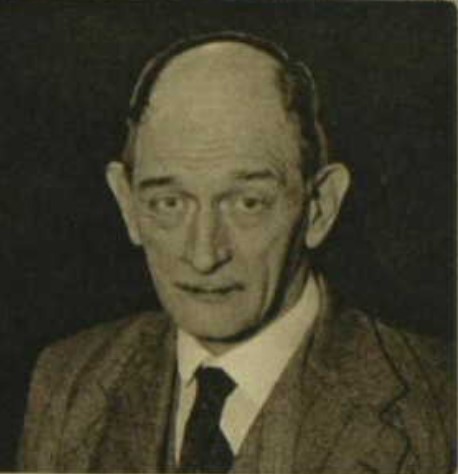 the following year
he was awarded an Archaeology Studentship at the British School in
Athens. He went on to get his MA in Cambridge in 1902. In 1910 he
married Irene Cremer Harris, at St Bride's in Fleet Street, describing
himself as a journalist, though from 1902 to 1910 he was a university
extension lecturer. Certainly in 1911 he was editor of the Oxford and
Cambridge Review. He was by then an author, and gaining respect as an
Art Historian.
Solomon and Irene had a daughter, Irene Bridget Cremer Kaines Smith, born on
8 October 1905. In 1914 he was appointed the first official lecturer at the
National Gallery in London. War intervened. He was a Major on the General
Staff Special Service (Intelligence Corps), in the Censor's Department, at
Salonika,
where he was an adviser for the Greek Government. He had been mentioned in
despatches and in 1919 he was awarded the MBE for his war service. He
returned to Art History. In 1921 he described himself as an author and
lecturer. After a short career lecturing in Cambridge, he became director of
the City Art Gallery in Leeds (1924-27). He was the author of several more
books.
Then in 1927 he became the Keeper of Birmingham Museum and Art Gallery, a
position he held until 1941. He was a Life Trustee of the Shakespeare
Birthplace Trust.
the following year
he was awarded an Archaeology Studentship at the British School in
Athens. He went on to get his MA in Cambridge in 1902. In 1910 he
married Irene Cremer Harris, at St Bride's in Fleet Street, describing
himself as a journalist, though from 1902 to 1910 he was a university
extension lecturer. Certainly in 1911 he was editor of the Oxford and
Cambridge Review. He was by then an author, and gaining respect as an
Art Historian.
Solomon and Irene had a daughter, Irene Bridget Cremer Kaines Smith, born on
8 October 1905. In 1914 he was appointed the first official lecturer at the
National Gallery in London. War intervened. He was a Major on the General
Staff Special Service (Intelligence Corps), in the Censor's Department, at
Salonika,
where he was an adviser for the Greek Government. He had been mentioned in
despatches and in 1919 he was awarded the MBE for his war service. He
returned to Art History. In 1921 he described himself as an author and
lecturer. After a short career lecturing in Cambridge, he became director of
the City Art Gallery in Leeds (1924-27). He was the author of several more
books.
Then in 1927 he became the Keeper of Birmingham Museum and Art Gallery, a
position he held until 1941. He was a Life Trustee of the Shakespeare
Birthplace Trust.
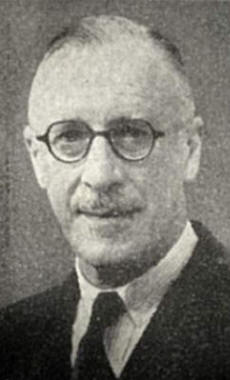 f war. He
arrived in France on 9 November 1914 . He was on the Western Front for three years before
suffering a gunshot wound in June 1917.
He was returned to England, and was treated at Exeter temporary war hospital
No 7, which was in Exeter University's Streatham Hall, now called Reed
Hall. It was one of the Exeter's seven temporary wartime treatment centres for
troops. After treatment at Hospital No 7 Richard was passed fit for home service and the Army posted him as the Resident Medical Officer to the Exeter war hospital No 5. This was in Little Castle Street, Exeter, now called Bradninch Hall.
Richard was a Captain at the end of war. He was awarded the Victory Medal,
the British War Medal and the 1914 Star.
f war. He
arrived in France on 9 November 1914 . He was on the Western Front for three years before
suffering a gunshot wound in June 1917.
He was returned to England, and was treated at Exeter temporary war hospital
No 7, which was in Exeter University's Streatham Hall, now called Reed
Hall. It was one of the Exeter's seven temporary wartime treatment centres for
troops. After treatment at Hospital No 7 Richard was passed fit for home service and the Army posted him as the Resident Medical Officer to the Exeter war hospital No 5. This was in Little Castle Street, Exeter, now called Bradninch Hall.
Richard was a Captain at the end of war. He was awarded the Victory Medal,
the British War Medal and the 1914 Star. King-Smiths married the granddaughters of William Esau Heard. Arthur Beresford KING-SMITH was born in Keynsham, Somerset. He was a cousin of Dick King-Smith, author of The Sheep Pig, which was made into the film Babe. He was educated at St Peter’s School, Weston-super-Mare, where Roald Dahl had been a pupil, and then at Sherborne School. After National Service with the Royal Artillery in Gibraltar, he started a degree at Corpus Christi College, Cambridge, but dropped out and joined the family business, Golden Valley Paper Mills, in Bitton, South Gloucestershire.
He became involved in music groups, and in 1955 founded the Bath Cantata
Group which is still active. He was a gifted composer and choral
conductor. He determined to leave the family business and in January 1964 he joined the City of Birmingham Symphony
Orchestra's management team. He was responsible for running the
orchestra from his very first day, dealing with the practical details of concerts, from setting up music stands and organising
refreshments, managing the musicians, to ferrying soloists around the
Midlands and further afield. He organised extensive tours in Europe, both East and West of the Iron Curtain Beresford
handled the situation when Hugo Rignold, the conductor, was briefly arrested by Soviet border
guards as a suspected spy during the 1968 Czechoslovakia tour, and
he negotiated with Yugoslavian officials when players were mistakenly detained
during the 1972 Eastern Bloc tour.
When the CBSO’s chief conductor and general manager both departed
abruptly in April 1978, the most serious crisis of its postwar existence, it fell to King-Smith to pick up the pieces.
He and George Jonas, who headed the council of management, brought in Erich
Schmid to conduct, while the arrival of Ed Smith as general manager five
months later led to the appointment of a young Simon Rattle as music
director in 1980. Over the next 18 years King-Smith often drove Rattle, who
did not drive, from concert to concert, and he came to know the conductor
well.
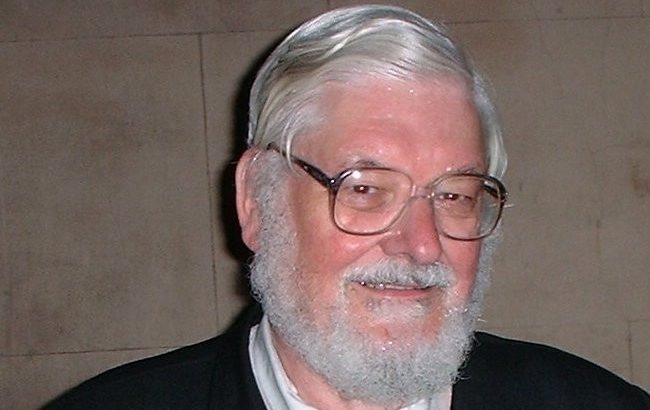
King-Smith was
subsequently appointed Deputy General Manager and later Deputy Chief
Executive. After serving as part of the team that implemented the expansion
of the Orchestra in 1988 and the move to Symphony Hall in 1991, he took early retirement in 1993 to complete the orchestra's
official history Crescendo! published by Methuen in 1995 to mark its 75th
anniversary. He became Honorary
Archivist, creating an archive of CBSO documents and recordings,
answering inquiries about the orchestra's history, and writing a regular
history column in the CBSO's in-house magazine Music Stand, which
he founded and edited. He remained in that unpaid role
until January 2014, by which time he had completed 50 years with the
orchestra. To many music lovers in the Midlands and beyond, King-Smith was,
after Simon Rattle, the public face of the CBSO, giving talks about its work
to clubs and societies.
Early music and choral music remained a passion for him. He was Chair of the Midlands Early Music Forum, and music director of the Circle Singers of Royal Leamington Spa. His other performing groups included Merrie Madrigall, a semi-professional group of costumed singers, Quadro, a small instrumental group; and the Holborne Consort of Recorders.
He died on September 28 2021, aged 90.
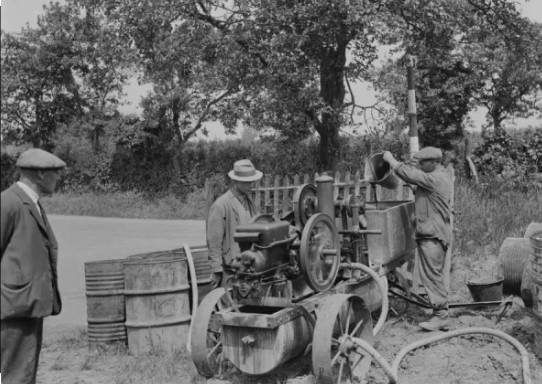
East Malling Research Station
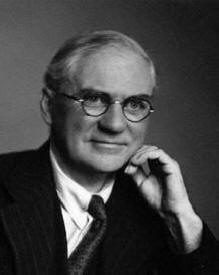 collaboration with others, demonstrated his determination to
place pomology on a more scientific foundation. Hatton’s most important
contributions to scientific fruit culture were concerned with the
standardization of the material which was to be the subject of experimental
investigation. Very early in his career he appreciated that
strikingly differing results were produced when scions of uniform
origin were grafted upon root-stocks that were not of similar
uniformity. Such differences could completely
invalidate the apparent effects of experimental treatments aimed to reveal the influence of nutritional or other factors. This led Hatton to
investigate the variability that obtained amongst stocks commonly
employed at that time for grafting apples, and quince
stocks used for the grafting of pears. He discovered that outcomes with these
differed widely in many aspects of their botanical characteristics. They also
differed vigour of the scions' growth and when they started fruiting. . Thus some individuals produced a
small-sized fruit tree that came into bearing early, others produced a fruit
tree of large dimensions that eventually yielded correspondingly larger
crops but which came into full bearing much more slowly. The final outcome
of these studies was the
production of the well-known series of Malling stocks.
Improvements in the earthing-up technique were then found to be essential
modifications of practice to make these results commercially available. The
practical achievement was of major importance since, for the first time,
fruit growers could plant up their orchards with confidence in the character of the trees that would develop.
Of even greater
significance for the scientific pursuit of pomology was that henceforth
large-scale experiments could be carried out with material in which stock
and scion were alike clonally uniform, each from one genetic source. The precision
of results achieved thus had been previously unattainable. Hatton was able to demonstrate that both
constituent parts of that artificially built-up organism, the grafted tree,
make their particular contribution to the characteristics of the fruiting
maturity. He published over ninety papers, covering fruit stocks of apples, pears and plums, black-currants
and also studies on pests and diseases. The value of his work was recognized by the Honorary
Fellowship of Wye College, where it began, by the conferment of the C.B.E.
in 1934 and by his election to the Royal Society in 1944. He was knighted
for his services to horticulture on his retirement in 1949. Hatton was
Director of the East Malling Research Station for a period of thirty years, from
Wellington's resignation in 1919, until his own retirement in 1949. When he took
charge of the Station in 1914 it had a very small
staff, a hut and only twenty-two acres of land. It was mainly through
Hatton’s initiative that Bradbourne House and estate was acquired in 1938, providing the means of experimental expansion, by then urgently
required. As the station grew, Hatton realised there was a need for a wider
range of research scientists to support the work of the pomologists. He
recruited other research
sections in the fields of physiology, biochemistry, pathology,
entomology, statistics and protective chemistry. He left to his successor well-equipped
laboratories, a large and effective staff and an area of three hundred and
sixty acres of land. His retirement was marked by tributes, the world over, to
the esteem in which he was held by his colleagues and all those connected
with the science and practice of pomology. In retirement he reverted to his gardening enthusiasms which had of necessity been somewhat
set aside during his directorship. He became a very successful cultivator of roses, pelargoniums and carnations as
well as choice fruit, first at Hythe and subsequently at Benenden. Hatton’s interest
in the educational welfare of farm-workers was lifelong and practical. He it
was who, in association with Mr. Albert Mansbridge, founded the Kentish
branch of the Workers’ Educational Association. He was also the first Director of
the Commonwealth Bureau of Horticultural and Plantation Crops and
subsequently Consultant Director. He played a prominent part in the
development of the Fruit Group of the Royal Horticultural Society, on the
Council of which he served. Hatton died at his home at Benenden, Kent, on 11
November 1965 and was buried in East Malling Churchyard.
collaboration with others, demonstrated his determination to
place pomology on a more scientific foundation. Hatton’s most important
contributions to scientific fruit culture were concerned with the
standardization of the material which was to be the subject of experimental
investigation. Very early in his career he appreciated that
strikingly differing results were produced when scions of uniform
origin were grafted upon root-stocks that were not of similar
uniformity. Such differences could completely
invalidate the apparent effects of experimental treatments aimed to reveal the influence of nutritional or other factors. This led Hatton to
investigate the variability that obtained amongst stocks commonly
employed at that time for grafting apples, and quince
stocks used for the grafting of pears. He discovered that outcomes with these
differed widely in many aspects of their botanical characteristics. They also
differed vigour of the scions' growth and when they started fruiting. . Thus some individuals produced a
small-sized fruit tree that came into bearing early, others produced a fruit
tree of large dimensions that eventually yielded correspondingly larger
crops but which came into full bearing much more slowly. The final outcome
of these studies was the
production of the well-known series of Malling stocks.
Improvements in the earthing-up technique were then found to be essential
modifications of practice to make these results commercially available. The
practical achievement was of major importance since, for the first time,
fruit growers could plant up their orchards with confidence in the character of the trees that would develop.
Of even greater
significance for the scientific pursuit of pomology was that henceforth
large-scale experiments could be carried out with material in which stock
and scion were alike clonally uniform, each from one genetic source. The precision
of results achieved thus had been previously unattainable. Hatton was able to demonstrate that both
constituent parts of that artificially built-up organism, the grafted tree,
make their particular contribution to the characteristics of the fruiting
maturity. He published over ninety papers, covering fruit stocks of apples, pears and plums, black-currants
and also studies on pests and diseases. The value of his work was recognized by the Honorary
Fellowship of Wye College, where it began, by the conferment of the C.B.E.
in 1934 and by his election to the Royal Society in 1944. He was knighted
for his services to horticulture on his retirement in 1949. Hatton was
Director of the East Malling Research Station for a period of thirty years, from
Wellington's resignation in 1919, until his own retirement in 1949. When he took
charge of the Station in 1914 it had a very small
staff, a hut and only twenty-two acres of land. It was mainly through
Hatton’s initiative that Bradbourne House and estate was acquired in 1938, providing the means of experimental expansion, by then urgently
required. As the station grew, Hatton realised there was a need for a wider
range of research scientists to support the work of the pomologists. He
recruited other research
sections in the fields of physiology, biochemistry, pathology,
entomology, statistics and protective chemistry. He left to his successor well-equipped
laboratories, a large and effective staff and an area of three hundred and
sixty acres of land. His retirement was marked by tributes, the world over, to
the esteem in which he was held by his colleagues and all those connected
with the science and practice of pomology. In retirement he reverted to his gardening enthusiasms which had of necessity been somewhat
set aside during his directorship. He became a very successful cultivator of roses, pelargoniums and carnations as
well as choice fruit, first at Hythe and subsequently at Benenden. Hatton’s interest
in the educational welfare of farm-workers was lifelong and practical. He it
was who, in association with Mr. Albert Mansbridge, founded the Kentish
branch of the Workers’ Educational Association. He was also the first Director of
the Commonwealth Bureau of Horticultural and Plantation Crops and
subsequently Consultant Director. He played a prominent part in the
development of the Fruit Group of the Royal Horticultural Society, on the
Council of which he served. Hatton died at his home at Benenden, Kent, on 11
November 1965 and was buried in East Malling Churchyard. Thanks to Royal Society Publishing, and to the National Portrait Gallery for the portrait of Sir Ronald Hatton by Walter Stoneman.
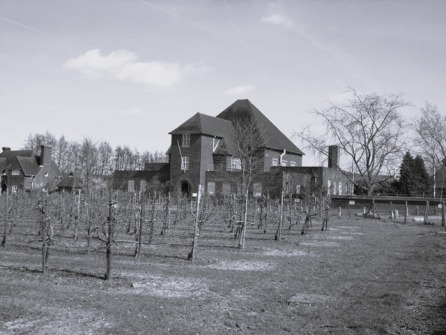
Laboratory at East Malling Research Station
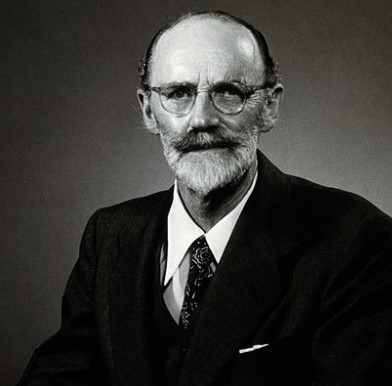
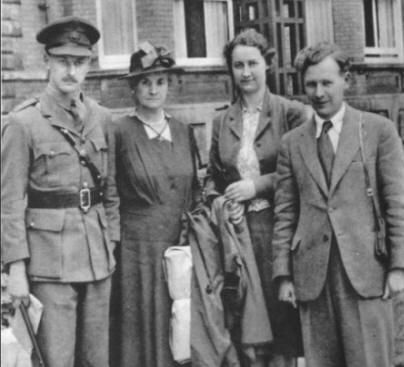
L to r, Herbert Wallace Le Patourel VC, Mrs. Mary Le Patourel
née Daw,
Edith
Le Patourel, Professor John Herbert Le Patourel
Herbert Augustus LE PATOUREL was born to a modest family in
St. Peter Port,
Guernsey in 1875. Father was James Carré Le Patourel, a baker and later
a miller. Herbert Augustus was the youngest in a family of four sons and
three daughters. He started work as a solicitor's clerk in Guernsey, in
the chambers of Advocate W. Carey and from 1900 to 1903 studied for his
degree at Caen University. To be a graduate of Caen University for
someone from Guernsey normally meant one had earned a Certificat d'Études Juridiques Françaises et Normandes
(Certificat) from the University, an essential requirement to becoming an
Advocate in Guernsey. This
certificate focuses on Norman law and French legal
systems. On 1 July 1905 Herbert was sworn in as Advocate of the Royal Court,
having obtained the diploma of Licencié en Droit (Caen) and successfully
passed the examination in local law. After the swearing in he took his seat in
Court wearing the traditional gown and cap.
Royal Court of Guernsey, with Advocates in
traditional robes In 1908 this Guernsey barrister married a farmer's daughter, from Crediton,
Devon, a Heard cousin, Mary Daw. How did they meet? They lived in
Guernsey, one of their homes there being named Kyrton, the ancient
name for Crediton. Advocate Le Patourel was kept busy with the affairs
of the Royal Court, prosecuting and defending in civil cases. He was a staunch
churchman, and his interests extended outside his profession into
ecclesiastical and military affairs, while his wife Mary was very much
concerned with domestic matters. They had three children. The eldest, John
Herbert LE PATOUREL,
born in 1909, suffered from poor health as a child, and his schooling was
disrupted. He spent a year with his grandparents in Devon. But wandering in
Exeter cathedral, and among the ancient rocky shores of Guernsey, he managed
to absorb interests, awareness and knowledge that would enrich his career in
later years. In 1928 he went up to Jesus College Oxford with a scholarship.
He joined the Archaeological Society, later to become its President then a
Life Member. He graduated with a BA in Modern History in 1931. He continued at Jesus as the Goldsmith's Company's Senior
Student from 1931 to 1933. In 1933 he gained an Assistant Lectureship at University College London,
and was made a Lecturer in 1936. He achieved his DPhil. and published his doctoral thesis in
1937. In 1939 he married Hilda Elizabeth Jean BIRD (1915-2011). She was then a secondary school
teacher. Then war broke out. John was declared unfit for military
service. For a while he was seconded to University College, Leicester. As
well as founding the Local Defence Volunteers he became involved in Adult
Education. But at the end of 1940 he rejoined University College London,
first based at Bangor, then from 1944, back in London. During these years he
contributed much to Forces Education and gave Current Affairs classes. In
1945 he was appointed Professor of Medieval History at the University of
Leeds. He remained in that post until 1970. He was then a
Research Professor at Leeds until 1974 when he retired with the title
Emeritus Professor. Professor John Herbert Le Patourel While at Leeds he became the
Vice-Chancellor's Deputy. He was a founder member of the Guernsey Society,
which was established in 1943 to represent the interests of the
Nazi-occupied island to the British Authorities. In 1967 he was a founder
and the first Director of the Graduate Centre for Medieval Studies, until
1970. In his wider academic world, he was Archivist to the Royal Court
of Guernsey from 1946 onwards, and President of the Thoresby Society, of the
Yorkshire Archaeological Society and of the Leeds Philosophical Society.
Beyond the University and these societies he lectured widely, to other
groups of students from other universities and colleges, to local branches
of the Historical Association, and the Council for British Archaeology. He
was elected a Fellow of the British Academy in 1972. He continued with
research and publication until his death on 22 July 1981. In 1979, the
graduate student research office at the Institute for Medieval Studies was
named the 'Le Patourel Room' in his honour. John's magnum opus was The
Norman Empire published in 1976. He had numerous books, papers and
pamphlets published throughout his life. His wife Jean Bird had graduated in History at Bedford College, University of
London, and gained a Diploma In Education in 1939. After her marriage
to John, they worked together on archaeological and historical research on
Guernsey. After they moved to Leeds they both became involved in research on
Kirkstall Abbey, with excavations sponsored annually by the City of Leeds
museums from 1950 to 1954. Jean took responsibility for the
study of the medieval pottery found there. Largely through Jean's work, the
knowledge of Yorkshire medieval ceramics was transformed from general
awareness to precise understanding of forms, fabrics, chronology, regional
patterns, and even in some cases to specifics re kiln sources. Over the
following years Jean's research further enriched the knowledge about
Yorkshire medieval ceramics. Jean's contacts with John Hurst, national
expert on medieval pottery and coordinator of medieval rescue excavations
for the Inspectorate of Ancient Monuments resulted in her undertaking a
number of such excavations in Yorkshire. This prompted her interested in
moated sites, and she was involved in several studies of such sites. At the
deserted medieval village of Wharram Percy, Jean worked on the ceramics from
there with Hurst. Work there led to Jean leading excavations at
Knaresborough Castle. This led to further research on moated manors sites,
such as West Haddlesey, alongside the formation of the Moated Sites Research
Group, which later merged with the Deserted Medieval Village Group to form
the Medieval Settlement Research Group.
Hilda Elizabeth Jean Le Patourel , BA, FSA
She was appointed to a lectureship
in History and Archaeology in the then Department of Adult Education and
Extra-Mural Studies in the University of Leeds in 1967, and to an Associate
Lectureship in the Department of Archaeology in 1976. She was appointed to
the Chair of a newly-formed Medieval Section of the Yorkshire
Archaeological Society. A member of the Society’s Council from 1968 to
1971, she was elected an Honorary Vice-President in 1986, a post she held
for twenty five years. She was elected a Fellow of the Society of
Antiquaries in 1960. Alongside her work on medieval ceramics, Jean became
the world's leading expert on the archaeology of dog collars. John's
international academic network meant that Jean and her work also became
well-known and widely respected abroad. Jean and John lived for much
of their lives in Ilkley, Yorkshire, where they brought up three sons and a
daughter. Jean's publications include ; Kirkstall Abbey Excavations:
the Pottery; 1950-4 On 18 July 2015, a blue plaque was unveiled at their childhood home in Fosse
Andre, St Peter Port, Guernsey celebrating the lives of Professor John
Herbert Le Patourel DPhil, FBA and his
brother, Brigadier Herbert Wallace Le Paourel VC.
Brigadier Herbert Le Patourel VC, with his wife Babette Theresa Le Patourel After attending a boarding school in Bournemouth, Anthea BELL,
great-great-granddaughter of our Mary Berry of Crediton, read English at
Somerville College, Oxford. She married the publisher and writer Antony
Kamm in 1957 . She began her career as a translator at the end of the 1950s when the
German publisher Klaus Flugge asked Antony Kamm if he knew anyone able to
translate Der kleine Wassermann, a book for children by Otfried Preussler.
Kamm recommended his wife; Bell's English version entitled The Little Water
Sprite was published in 1960. Eventually, she translated Preussler's entire
works.
Over the decades, Bell translated numerous Franco-Belgian comics of the bande
dessinée genre into English, including Asterix – for which her new puns were
praised for keeping the original French spirit intact. Peter Hunt,
Professor Emeritus in Children's Literature at Cardiff University, wrote of her "ingenious translations" of the French originals which "in a way
display the art of the translator at its best". Other comic books she
translated include Le Petit Nicolas, Lieutenant Blueberry, and Iznogoud.
The special nature of Bell's work is evidenced by the numerous literary
awards she won. 1987 – Schlegel-Tieck Prize for Hans Bemmann's The Stone and the Flute As a result of her forced retirement, the 37th
book in the Asterix series, Asterix and the Chariot Race (published
in October 2017), was translated by Adriana Hunter. She died on 18 October 2018, aged 82. Her life and work has inspired the competition The Anthea Bell
Prize for Young Translators, launched by the Queen's College Translation
Exchange in 2020.
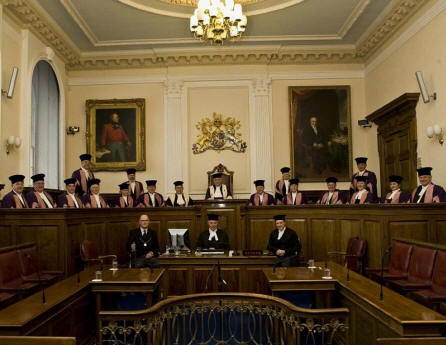
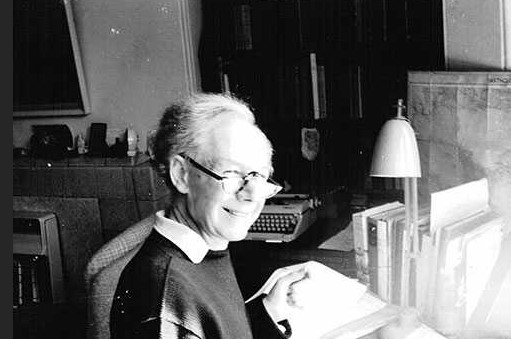
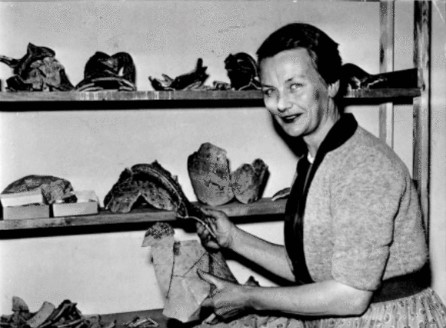
A Cistercian Ware Kiln of the Early Sixteenth Century at Potterton,
Yorkshire; Antiquity (1966)
Documentary Evidence and the Medieval Pottery Industry, Medieval
Archaeology (1968)
Four Medieval Pottery-Kilns on Woodhouse Farm, Winksley, near Ripon, W.
Riding of Yorkshire, Medieval Archaeology (1970)
The Moated Sites of Yorkshire (1973)
A Select Bibliography of the Publications of John Le Patourel 1935–1975,
Northern History (1975)
Les sites fossoyés (moated sites) et leurs problèmes (l'organisation de
la recherche en Grande Bretagne), Revue du Nord (1976)
"Documentary Evidence", "The Excavation of Moated Sites" and "The
Significance of Moated Sites", in Medieval Moated Sites (1978)
Eds. Hilda Elizabeth Jean Le Patourel, Moira H. Long, May F. Pickles,
Yorkshire Boundaries (1993)
"The Dog Collar" in Late Viking Age and Medieval Waterford
(1997)
John Herbert Le Patourel had a younger brother , Herbert Wallace LE PATOUREL
(1916-1979) Herbert, too, lived a life of great achievement, though very
different from his brother. Brigadier Herbert Wallace Le Patourel's story
has a place here in our Roll of
Honour.
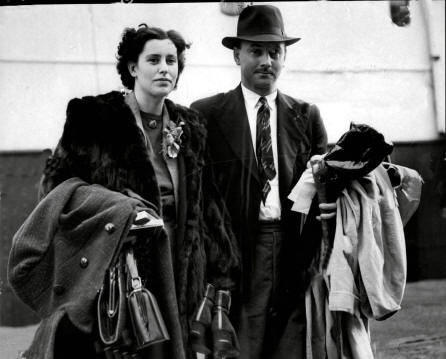
Anthea Bell (1936-2018)

She specialised in translating children's literature, and re-translated Hans
Christian Andersen's fairytales from Danish for the publishing house of Putnam. She also translated the Inkworld trilogy by Cornelia Funke and
the Ruby Red Trilogy by Kerstin Gier. Other works include The Princess and the
Captain (2006), from La Princetta et le Capitaine by Anne-Laure
Bondoux.
Bell also translated into English many adult novels, as well as some books on
art history, and musicology. She has translated W.G. Sebald's Austerlitz (plus
other works by Sebald), and Władysław Szpilman's memoir The Pianist
(translated, at the author's request, from the German version). Her
translations of works by Stefan Zweig have been said to have helped restore
his reputation among Anglophone readers, and that of E. T. A. Hoffmann's The
Life and Opinions of the Tomcat Murr (originally Lebensansichten des Katers
Murr) has had a positive effect on Hoffman's profile as well. In addition,
Penguin Classics published Bell's new translation of Sigmund Freud's The
Psychopathology of Everyday Life in 2003. Oxford University Press published
her translation of Kafka's The Castle in 2009.
She contributed an essay titled "Translation: Walking the Tightrope of
Illusion" to a 2006 book, The Translator as Writer, in which she explained her
preference for 'invisible' translation whereby she creates the illusion that
readers are not reading a translation "but the real thing".
Bell was appointed Officer of the Order of the British Empire (OBE) in the
2010 New Year Honours for her services to literature and literary
translations.
In 2014, Bell faithfully retranslated Erich Kästner's 1949 German children's
novel Das doppelte Lottchen into English as The Parent Trap, after Disney's
popular film adaptation of the book. Bell's translation was published in the
United Kingdom and Australia by Pushkin Press, replacing Cyrus Brooks' 1962
English translation, which is still published in the United States and Canada
as Lisa and Lottie. In 2020, Australian actress Ruby Rees recorded an
unabridged narration of Bell's translation.
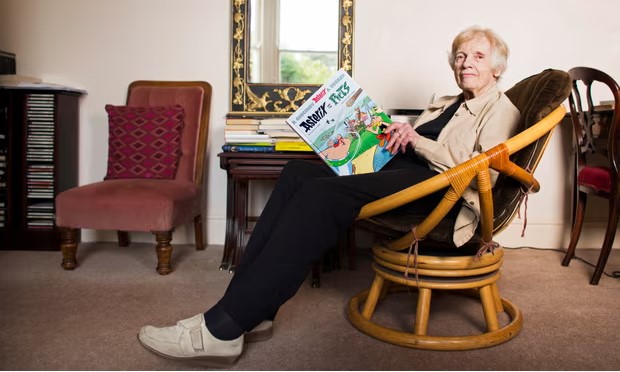
She received the German Federal Republic's Order of Merit in 2015, and the
many other awards as listed here.
1996 – Marsh Award for Children's Literature in Translation – for Christine
Nöstlinger's A Dog's Life translated from German
2002 – Helen and Kurt Wolff Translator's Prize, Goethe Institute – for W. G.
Sebald's Austerlitz
2002 – Independent Foreign Fiction Prize – for W. G. Sebald's Austerlitz
2002 – Schlegel-Tieck Prize for W. G. Sebald's Austerlitz
2003 – Schlegel-Tieck Prize – for Karen Duve's Rain translated from German
2003 – Marsh Award for Children's Literature in Translation – for Hans Magnus
Enzensberger's Where Were You Robert? translated from German
2007 – Marsh Award for Children's Literature in Translation – for Kai Meyer's
The Flowing Queen translated from German
2009 – Oxford-Weidenfeld Translation Prize – for Saša Stanišić's How the
Soldier Repairs the Gramophone
2009 – Schlegel-Tieck Prize for Stefan Zweig's Burning Secret
2017 – Eric Carle Museum Bridge Award for contributions to children's
literature
Mildred L. Batchelder Award
The Mildred L. Batchelder Award is unusual in that it is given to a publisher
yet it explicitly references a given work, its translator and its author. Its
intent is to encourage the translation of children's works into English in
order "to eliminate barriers to understanding between people of different
cultures, races, nations, and languages." Anthea Bell, translating from German, French and Danish, has been mentioned
for more works than any other individual or organisation (including
publishers) in the history of the award.
Anthea Bell and Antony Kamm were divorced in 1973. They had two sons.
After her sons left home, she lived and worked in Cambridge.
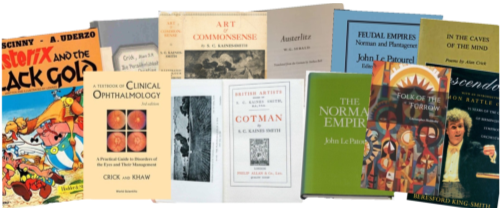
Publications of Anthea Grant, Ronald and Alan Pitts
Crick, Solomon C. Kaines Smith,
John LePatourel, Ronald Hatton and Arthur Beresford King-Smith